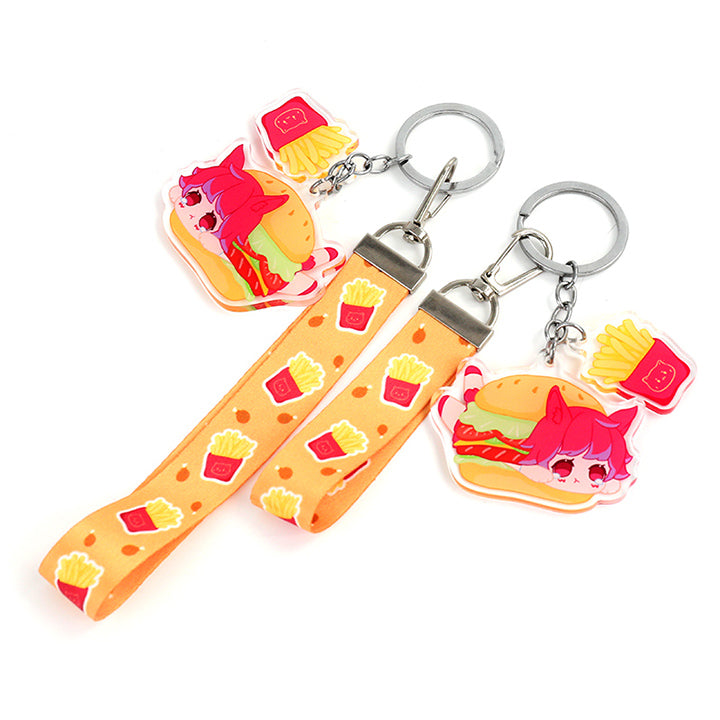Customizing a lanyard keychain can be a fun and creative project that yields practical and stylish results. Whether you’re looking to promote your brand, commemorate an event, or create a unique personal accessory, custom lanyard keychains offer versatility and utility. This guide will walk you through the process of customizing a lanyard keychain, covering everything from design considerations to material choices and printing techniques.
1. Determine the Purpose and Audience
Purpose:
Before starting the customization process, it’s essential to define the purpose of your lanyard keychain. Are you creating it for a corporate event, a school function, a promotional giveaway, or personal use? The purpose will guide many of your design decisions.
Audience:
Consider who will be using the lanyard keychain. If it’s for a corporate event, the design might be more professional and brand-centric. For a school or sports team, you might use more vibrant colors and playful graphics. Understanding your audience ensures that the final product appeals to the intended users.
2. Choose the Right Material
Lanyard keychains come in various materials, each offering different benefits:
Polyester:
Polyester is a popular choice due to its durability and smooth texture. It’s excellent for detailed designs and logos.
Nylon:
Nylon lanyards are strong and shiny, providing a high-quality appearance. They’re suitable for heavier acrylic keychains or attachments.
Satin:
Satin lanyards have a soft, glossy finish, making them feel luxurious and look professional.
Eco-Friendly Options:
Consider recycled or biodegradable materials for an environmentally friendly option.
3. Select the Appropriate Width and Length
Lanyard keychains come in various widths, typically ranging from 1/2 inch to 1 inch. The width you choose will depend on your design’s complexity and the amount of text or logos you want to include. A wider lanyard offers more space for detailed designs but might feel bulkier.
The standard length for a lanyard is about 36 inches, which allows it to hang comfortably around the neck. Adjust the length based on how and where it will be worn.
4. Design Your Lanyard Keychain
Colors:
Choose colors that align with your brand or event theme. Use color psychology to evoke certain feelings or reactions. For instance, blue often represents trust and professionalism, while red can convey excitement and urgency.
Graphics and Logos:
Incorporate logos, symbols, or images that represent your brand or event. Ensure that these elements are high-resolution and suitable for printing on fabric.
Text:
If you include text, keep it concise and legible. Choose a font that complements your design but remains readable. Consider the placement of the text to ensure it’s visible when worn.
5. Select Printing Methods
Different printing methods can achieve various effects on your lanyard keychain:
Screen Printing:
Ideal for simple designs with one or two colors. It’s cost-effective for bulk orders and provides a durable print.
Dye Sublimation:
Perfect for detailed and full-color designs. The dye sublimation process infuses the ink into the fabric, resulting in vibrant colors and a smooth finish.
Heat Transfer:
Suitable for smaller quantities and designs that require high precision. Heat transfer applies the design onto the lanyard using heat and pressure.
Woven:
Woven lanyards incorporate the design into the fabric itself, offering a high-quality and long-lasting result. This method is ideal for simple designs and logos.
6. Add Functional Features
Enhance the practicality of your lanyard keychain with additional features:
Attachments:
Choose from a variety of attachments like key rings, badge holders, clips, or hooks. The type of attachment depends on the intended use of the lanyard.
Breakaway Clips:
For safety, especially in environments where the lanyard might get caught, consider adding a breakaway clip. This feature ensures the lanyard will come apart under pressure, preventing accidents.
Adjustable Lengths:
An adjustable buckle allows users to customize the length of the lanyard to their preference.
7. Order and Quality Check
Once your design is finalized, place your order with a reputable manufacturer. Request a sample if possible to check the quality of the materials and printing. Ensure that the final product meets your expectations in terms of color accuracy, print quality, and overall appearance.
8. Distribution and Usage
Brand Promotion:
If you’re using the lanyard keychains for promotional purposes, distribute them at trade shows, conferences, or as part of a promotional package. They can help increase brand visibility and serve as a functional reminder of your business.
Events and Functions:
For events, ensure that each participant receives a lanyard keychain. This not only serves as a functional item for holding badges or keys but also as a keepsake from the event.
Personal Use:
For personal projects, customize lanyard keychains with favorite quotes, designs, or images. They make great gifts for friends and family, combining practicality with a personal touch.
Conclusion
Customizing a lanyard keychain involves thoughtful consideration of purpose, audience, materials, and design elements. By following these steps, you can create a unique and practical accessory that meets your needs and stands out. Whether for promotional use, events, or personal enjoyment, a well-designed custom lanyard keychain is both functional and fashionable



